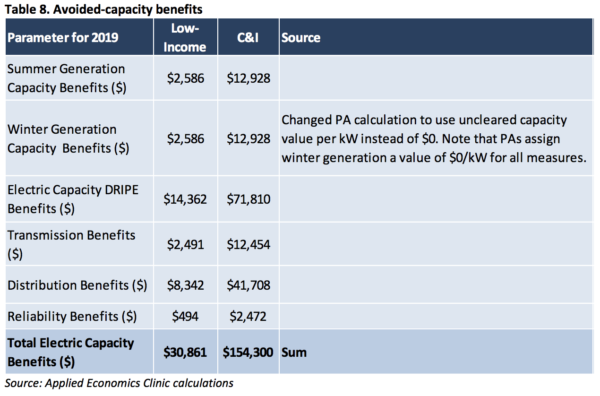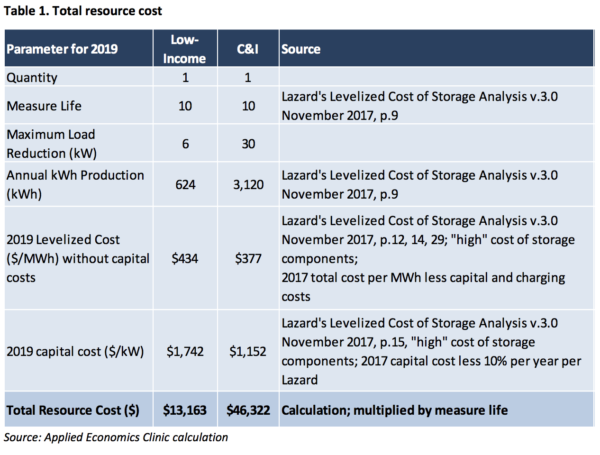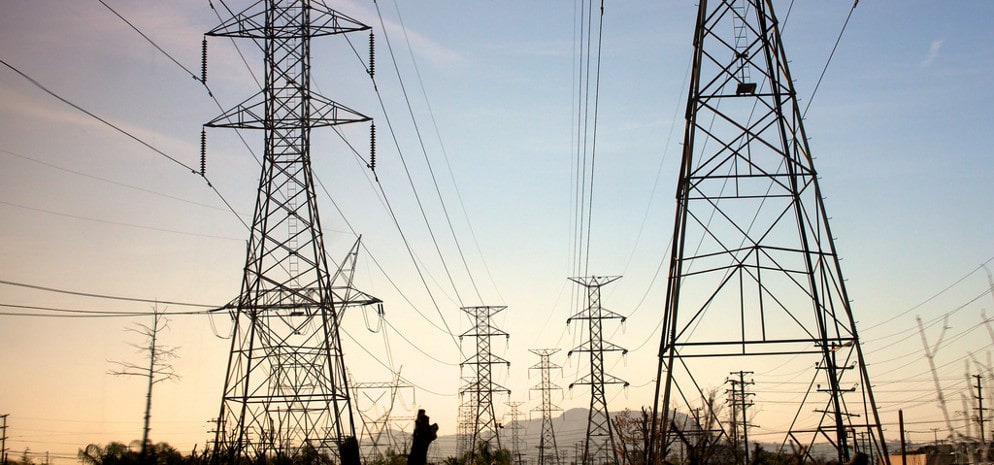A 30-kilowatt energy storage system in a multifamily apartment building in Massachusetts would have capacity benefits of 3.3 times its costs, while a 6-kilowatt storage system in a single-family home would have capacity benefits of 2.3 times its costs, according to a study funded by the Clean Energy Group.
“The benefits of electric battery storage outweigh the costs,” states the report, “and therefore must be offered by Massachusetts electric program administrators to their customers, in accordance with the Green Communities Act.” That law states that electric resource needs “shall first be met through all available energy efficiency and demand reduction resources that are cost effective or less expensive than supply.”
Nearly all of the estimated benefits of storage are capacity-related, and accrue to all customers on the grid, ranging from $31,000 for a household storage system to $154,000 for a multifamily-building system, as shown in Table 8 below.
Only minimal benefits would accrue in the form of avoided energy costs, as the system stores off-peak electricity for later use during higher-cost peak times; these savings would be less than $80 per year for each system. Any customer savings on demand charges were not estimated.
Almost half of the avoided-capacity benefits in Table 8 are from price reductions in the wholesale market for capacity, which benefit all customers. (This is known as “capacity DRIPE,” for “demand reduction induced price effect,” as shown in the table’s third row.) Next most significant are distribution and transmission benefits, followed by generation capacity benefits.

Against these benefits, the study estimates the costs of the household and multifamily storage systems, as shown in Table 1 below, using data from Lazard’s Levelized Cost of Storage Analysis, with three adjustments as explained in the study.

Dividing the capacity benefits in Table 8 by the total resource cost in Table 1 gives the benefit/cost ratio for each system size, when considering only the capacity benefits. The study also projected other energy-related benefits, of a much smaller magnitude, as well as benefits from increased property values.
The study presents a static analysis that does not consider whether the capacity value of new storage would change as the amount of installed storage increases.
Massachusetts Battery Storage Measures: Benefits and Costs was conducted by the Applied Economics Clinic at Tufts University and written by Elizabeth Stanton. The Clean Energy Group, which funded the study, manages the Clean Energy States Alliance, which works to accelerate clean energy deployment.
Technical note: The calculation of avoided-capacity benefits and avoided-capacity DRIPE benefits followed the methodology of the “BCR Model” developed by the program administrators for the Massachusetts energy efficiency program, with one exception as noted in the study. Transmission and distribution benefits presumably reflect the reduced need for new transmission and distribution lines, as storage allows more efficient use of existing lines. Generation capacity benefits presumably reflect the reduced need for capacity to meet peak demand, as storage can pump out power at those times.
The calculation of avoided-energy benefits drew on information in the report “Avoided Energy Supply Components in New England: 2018 Report” by Synapse Energy Economics. Avoided-energy DRIPE benefits were also estimated, at less than $20 per year for a storage system.
This content is protected by copyright and may not be reused. If you want to cooperate with us and would like to reuse some of our content, please contact: editors@pv-magazine.com.








By submitting this form you agree to pv magazine using your data for the purposes of publishing your comment.
Your personal data will only be disclosed or otherwise transmitted to third parties for the purposes of spam filtering or if this is necessary for technical maintenance of the website. Any other transfer to third parties will not take place unless this is justified on the basis of applicable data protection regulations or if pv magazine is legally obliged to do so.
You may revoke this consent at any time with effect for the future, in which case your personal data will be deleted immediately. Otherwise, your data will be deleted if pv magazine has processed your request or the purpose of data storage is fulfilled.
Further information on data privacy can be found in our Data Protection Policy.